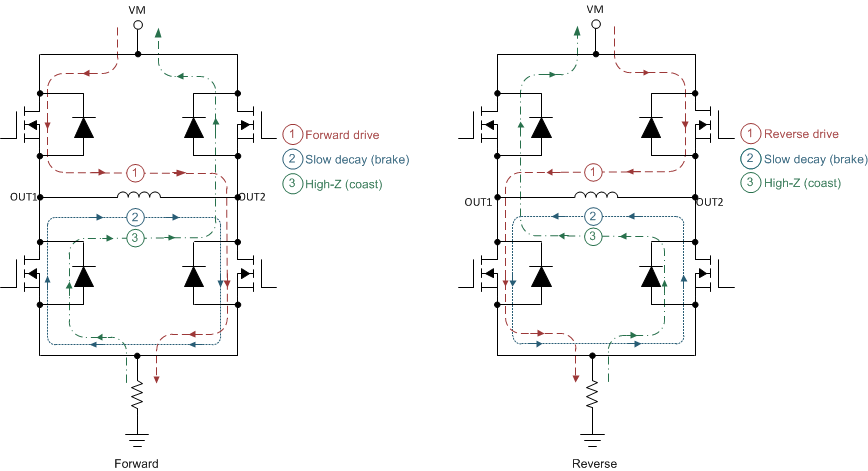SLVSFY8B February 2020 – August 2021 DRV8210
PRODUCTION DATA
- 1 Features
- 2 Applications
- 3 Description
- 4 Revision History
- 5 Device Comparison
- 6 Pin Configuration and Functions
- 7 Specifications
- 8 Detailed Description
- 9 Application and Implementation
- 10Power Supply Recommendations
- 11Layout
- 12Device and Documentation Support
- 13Mechanical, Packaging, and Orderable Information
Package Options
Mechanical Data (Package|Pins)
Thermal pad, mechanical data (Package|Pins)
- DSG|8
Orderable Information
8.3.2 Control Modes
The DRV8210 provides three modes to support different control schemes with the PH/IN1 and EN/IN2 pins. The MODE pin selects the control interface mode by setting it either logic low, logic high, or Hi-Z as shown in Table 8-2. The MODE pin does not latch its state, so it may be changed during operation.
The DRL package variant only supports the PWM interface (see Table 8-3).
| MODE STATE | CONTROL MODE |
|---|---|
| MODE = Logic Low | PWM |
| MODE = Logic High | PH/EN |
| MODE = Hi-Z | Half-Bridge |
The inputs can accept DC or pulse-width modulated (PWM) voltage signals with duty cycles from 0% to 100%. By default, the INx, PH/IN1, and EN/IN2 pins have internal pulldown resistors to ensure the outputs are Hi-Z if no inputs are present (the only exception is half-bridge mode, where OUTx = L if INx is floating).
The following sections show the truth tables for each control mode. Additionally, the DRV8210 automatically handles the dead-time generation when switching between the high-side and low-side MOSFET of a half-bridge. Figure 8-3 describes the naming and configuration for the various H-bridge states described in the following sections.
 Figure 8-3 H-bridge
states
Figure 8-3 H-bridge
states